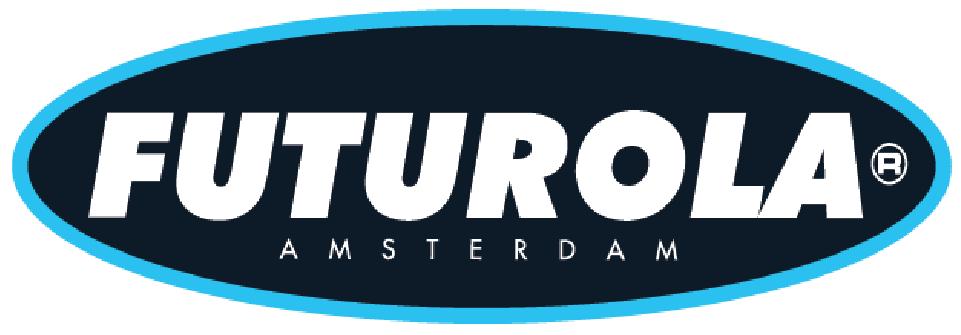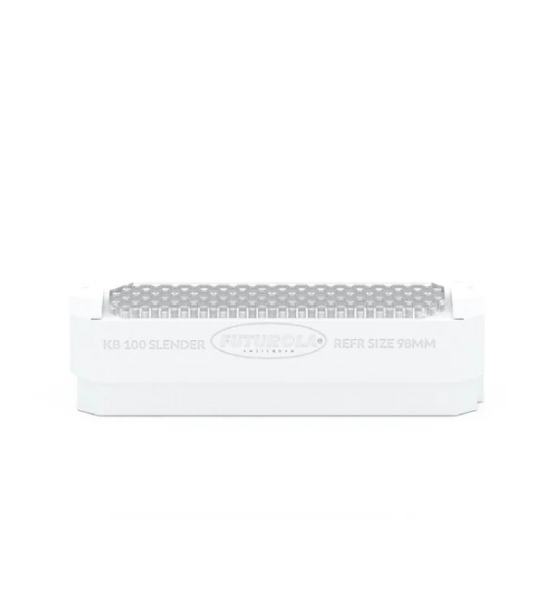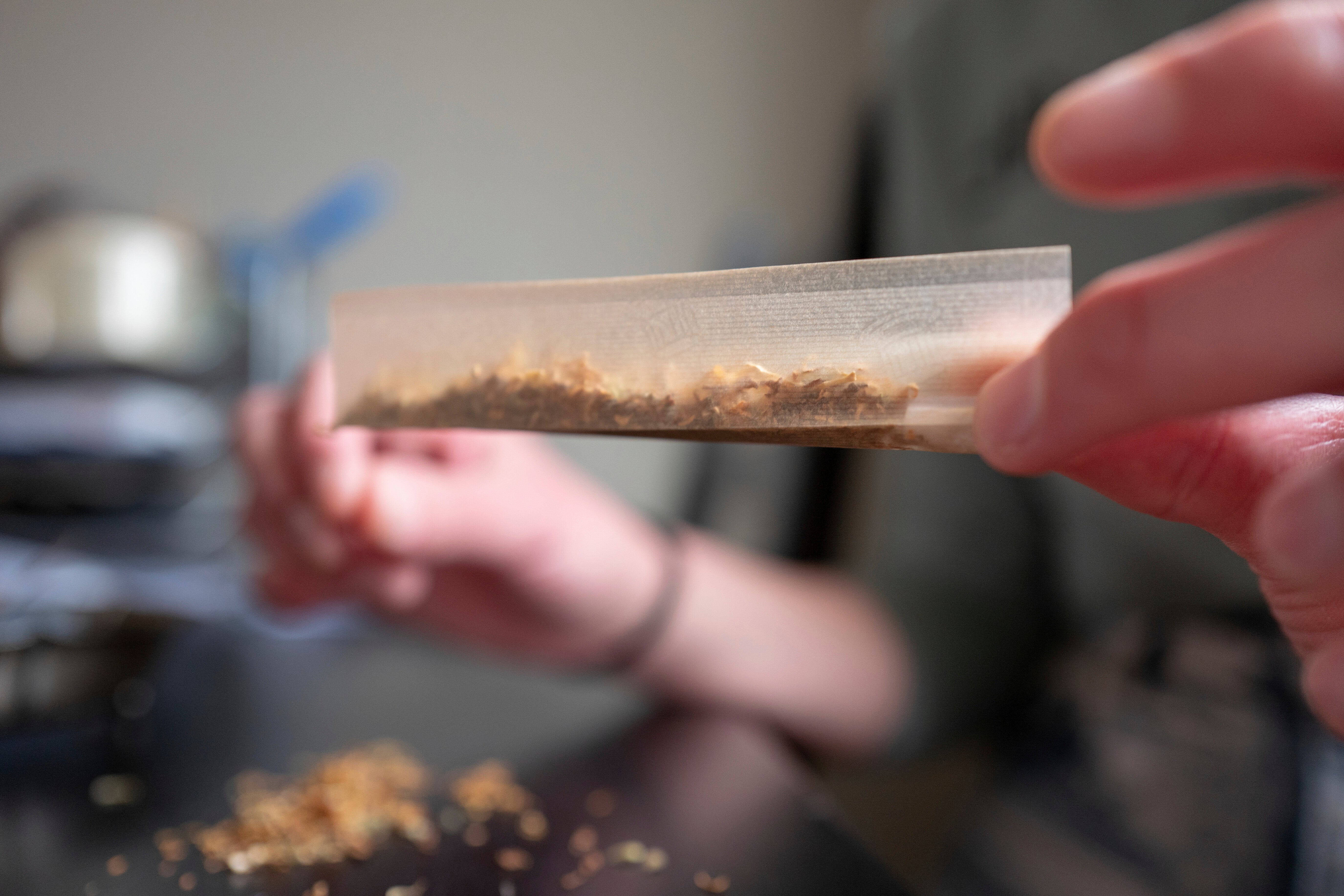The dutch crown device is designed to close cones with a uniform Dutch Crown fold at the top. This fold secures the contents inside the cone, creating a consistent seal that looks professional and reduces the risk of spillage. In modern production workflows, the device has become essential for achieving efficiency, precision, and scalability.
Producers who once relied on manual twisting often faced challenges with uneven folds, wasted material, and slow output. The introduction of this tool solved those problems by applying identical folds across every cone within seconds. The result is a streamlined system where consistency and speed work together.
Beyond aesthetics, the Dutch Crown fold protects product integrity throughout handling, packaging, and transport. Pre-rolled cones remain intact, and material loss is significantly reduced. For companies working at scale, these benefits translate into higher productivity, lower costs, and greater customer satisfaction.
The Role of the Dutch Crown Device in Modern Production
In professional production settings, the Dutch Crown device plays a critical role in ensuring that cones are sealed properly. It replaces manual methods that often lead to irregular closures, weak folds, or slow progress. The automated fold not only improves product presentation but also secures the contents firmly, ensuring that cones hold their structure during storage and shipping.
Modern production requires tools that balance speed with consistency. Manual folding cannot keep pace with larger batch sizes, and it introduces variation from one cone to the next. The Dutch Crown fold creates identical tops for every cone, maintaining reliability across thousands of units.
The device also supports the demands of scaling. Businesses looking to expand need processes that can grow without compromising quality. Sealing hundreds of cones in seconds allows producers to meet higher demand while keeping operations efficient. In this way, the Dutch Crown device has become part of the backbone of professional cone manufacturing.
Improving Quality Control
Consistent closures are vital for quality control. When cones are sealed by hand, variation is inevitable, leading to rejections or returns. The Dutch Crown fold ensures every cone looks the same, reducing the number of defective products and strengthening confidence in the final output.
Better quality control also reduces waste. Cones no longer need to be discarded because of poor sealing, which increases the usable yield of each batch. This improvement has both financial and operational benefits, as fewer materials are wasted and inspections move faster.
Stronger quality control also strengthens distributor and retailer relationships. Customers receive products that look professional and function reliably, which builds long-term trust and helps establish the brand as dependable in competitive markets.
Supporting Scalability
Scaling a production line creates pressure on every stage of the workflow. Manual folding becomes a bottleneck when demand rises, as more staff are required to handle increased volume. The Dutch Crown device solves this issue by automating closures at a speed that supports large-scale operations.
Growth becomes more sustainable because higher volumes do not require proportional increases in labor. Businesses can expand while keeping staffing levels stable, which makes operations more cost-effective.
Scalability also improves consistency. Even as batch sizes grow, each cone receives the same fold, ensuring that quality remains constant regardless of production volume. This stability allows companies to enter new markets with confidence.
Efficiency Benefits of Using a Dutch Crown Device
Efficiency is one of the most immediate advantages of adopting the Dutch Crown device. Closing cones manually requires repetitive effort, slows down production, and creates unnecessary strain on staff. Automating this step ensures that cones are sealed quickly and with uniform precision.
Faster closures reduce delays and allow production lines to maintain a steady rhythm. Teams can redirect their focus toward packaging, labeling, or quality checks, ensuring that resources are used more effectively. Efficiency also creates smoother scheduling, since each stage of the workflow progresses predictably without being held back by a slow finishing process.
The result is a system where productivity rises while errors and delays decline. Efficiency does not only save time but also supports the overall stability of the operation.
Saving Time at Scale
Time savings are one of the most tangible benefits of the Dutch Crown device. Folding a single cone by hand may not seem slow, but across hundreds or thousands of cones, the minutes quickly turn into hours. Automation completes this stage in a fraction of the time, keeping output high.
Time savings also add flexibility. Producers can take on larger orders or respond to seasonal increases in demand without additional strain. The ability to seal cones at scale without slowing down the line makes operations more adaptable and resilient.
Over extended periods, time saved translates into financial efficiency. Staff hours that would have been spent on manual folding can now be applied to higher-value tasks, increasing overall productivity without additional costs.
Reducing Workflow Bottlenecks
Manual folding often causes production bottlenecks. Even when cones are filled quickly, they cannot move forward until each one is sealed. This slow step restricts the pace of the entire line.
The Dutch Crown device removes this barrier by sealing cones rapidly and consistently. Once cones are filled, they move directly into closure, ensuring that the workflow continues without interruption. Eliminating bottlenecks improves scheduling and helps operations run more predictably.
Fewer bottlenecks also reduce stress on staff. Instead of rushing to catch up with the pace of filling, teams can maintain a steady workflow that balances speed with accuracy. This stability makes operations more sustainable over time.
Product Quality Benefits
The Dutch Crown fold improves both the appearance and the functionality of cones. Manual closures often look irregular, which lowers perceived quality. The device delivers neat, uniform folds that project professionalism and enhance brand credibility.
A clean fold also protects the product. Sealed cones are less likely to spill or become damaged during handling, ensuring that they remain intact throughout packaging and distribution. This level of consistency strengthens customer confidence and reduces complaints or returns.
For producers, quality improvements mean fewer losses, stronger brand reputation, and more satisfied customers. Over time, these advantages compound into lasting benefits.
Enhancing Appearance and Professionalism
Visual presentation matters. Cones that look uneven or poorly sealed can diminish customer confidence. The Dutch Crown fold creates a polished appearance across every unit, making products stand out as professional and reliable.
Uniform seals also improve packaging efficiency. Cones that are consistently folded fit neatly into trays, boxes, or wrappers, which reduces the chance of damage during transport. A professional look combined with structural integrity adds value at every stage.
Strong presentation strengthens brand recognition as well. Customers who consistently receive cones with a polished finish associate that quality with the brand, encouraging repeat business and loyalty.
Protecting Product Integrity
The Dutch Crown fold secures the cone’s contents, reducing the chance of spillage or damage. Loose or uneven tops are prone to leaks, but a firm, uniform fold keeps everything in place.
Product integrity becomes especially important during shipping. Cones are handled multiple times before reaching customers, and weak closures increase the risk of damage. A uniform seal reduces this risk, ensuring that products arrive as intended.
Maintaining integrity not only protects the product but also saves money. Fewer returns, fewer damaged cones, and less wasted material strengthen the bottom line.
Cost-Saving Benefits
Cost savings are another key advantage of the Dutch Crown device. Automation lowers labor requirements, reduces waste, and creates a more efficient production process overall. These savings accumulate, making the device a worthwhile investment.
Labor costs are reduced because fewer staff are needed to handle closures. Instead of assigning multiple people to this repetitive task, a single operator can oversee the device. Waste is also reduced, since cones sealed consistently are less likely to be rejected or discarded.
Together, these savings improve profitability and help producers scale without significantly raising expenses. The financial efficiency created by the device ensures long-term sustainability for operations of all sizes.
Lowering Labor Costs
Manual folding often requires several staff members when batch sizes increase. The Dutch Crown device reduces the need for dedicated labor in this area, allowing teams to work more efficiently with fewer resources.
Lower labor requirements also improve operational flexibility. Producers can allocate workers to tasks that require greater attention, such as packaging or quality checks, while the device handles closures. This shift enhances both efficiency and value.
For businesses focused on scaling, lower labor costs make expansion easier. Larger orders can be fulfilled without the need for additional hiring, which keeps operations lean and competitive.
Minimizing Waste
Waste often occurs when cones are sealed poorly. Twists that are too loose spill material, while folds that are too tight can damage the cone. Both issues lead to rejected products and lower profitability.
The Dutch Crown device minimizes waste by applying a precise and secure fold every time. Cones are sealed correctly on the first attempt, protecting both the product and the bottom line.
Less waste also supports sustainability. Using resources efficiently reduces environmental impact, which benefits both the business and its customers.
Tools That Complement the Dutch Crown Device
The Dutch Crown device delivers the best results when paired with supportive tools. Pre Rolled Cones provide the foundation for closure, while high-quality pre-rolled cones ensure durability and compatibility with automated systems. Material preparation is handled by Shredders, which produce a consistent grind for smooth filling.
Organization tools such as rolling trays and cone rollers keep the process structured, while rolling papers and other rolling accessories ensure quality at each step. Together, these items create a complete ecosystem that enhances both efficiency and reliability.
Integration with automated filling machines such as the Knockbox completes the workflow. Cones move seamlessly from filling to closure, creating a process that maximizes output while maintaining professional standards.
FAQs
What are the main benefits of a dutch crown device?
The main benefits include faster workflows, consistent closures, improved product quality, reduced labor costs, less waste, and stronger scalability. These advantages make the device essential for professional cone production.
How does the device help reduce costs?
Labor costs decrease because fewer staff are needed for closures, and waste declines since cones are sealed correctly the first time. Together, these factors increase profitability and efficiency.
Does it improve product appearance?
Yes. The uniform Dutch Crown fold creates a polished appearance across every cone, which strengthens brand credibility and makes products more appealing to distributors and customers.
Can it be used with different cone sizes?
Most models are designed for king-size cones, although certain versions support slender or reefer formats. Choosing the correct device ensures compatibility and consistent results.
How does it integrate with other production tools?
The device works with grinders, filling systems, and accessories such as trays and rollers. When used together, these tools create a streamlined production system that improves both efficiency and quality.





LEAVE A COMMENT
All comments are moderated before being published.
This site is protected by hCaptcha and the hCaptcha Privacy Policy and Terms of Service apply.